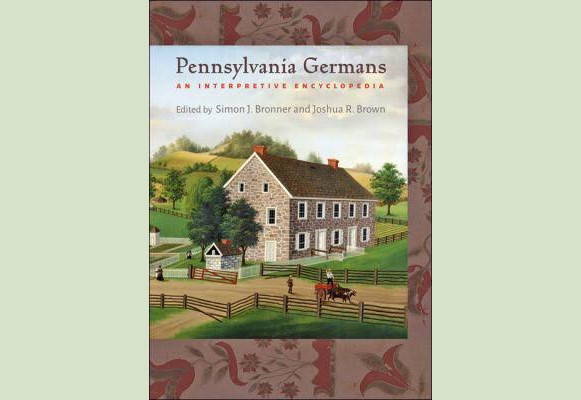Pennsylvania German culture saturates the eastern half of the state. Its influence can be seen from common terminology to architecture. To celebrate this culture, Johns Hopkins University Press recently published “Pennsylvania Germans: An Interpretive Encyclopedia.”
The book, edited by Simon J. Bronner and Joshua R. Brown, features the chapter, “Language Use among Anabaptist Groups,” written by Elizabethtown College’s Young Center for Anabaptist and Pietist Studies Senior Scholar Steven Nolt, Senior Fellow Emeritus Donald Kraybill and Research Associate Edsel Burdge
Kraybill explained that the Young Center possesses comprehensive information about various Old Order groups and tracks their memberships. “It was natural that they turned to us for a descriptive essay on the number and the types of groups that have continued to speak Pennsylvania German,” he said of the book’s editors.
Elements of Pennsylvania German culture are all around us in his region of the state: art, food, architecture, place names and so on, but it isn’t always recognized or understood.”
The primary purpose of the chapter is to “explain where and when speakers use Pennsylvania Dutch, versus German and English—at home, in church and for religious rituals, in publications,” Nolt explained. The E-town researchers analyze language in terms of its use and function in Old Order society.
Nolt said that from the 1700s to the early 1900s, a wide range of Keystone State residents spoke Pennsylvania German. Over the last 100 years, Amish and Mennonites retained the language, while most other Old Order groups did not pass the dialect on to their children. As a result, members of plain Anabaptist groups are the primary speakers of Pennsylvania German today.
The scholars said they are interested in language as a cultural aspect of Pennsylvania German life. For Kraybill, the changes in speaking habits are particularly fascinating. “Today the overwhelming majority of Pennsylvania German speakers are Amish and Old Order Mennonites,” he said, pointing out that their populations are “doubling about every 20 years.” As a result, Pennsylvania German is one of a few minority languages in the world that is increasing in number of speakers, rather than facing extinction through globalization.
Nolt said he sees importance in analyzing Pennsylvania German cultural influence on the region. “Elements of Pennsylvania German culture are all around us in his region of the state: art, food, architecture, place names and so on, but it isn’t always recognized or understood,” he said. Fraktur artwork (the ornamented calligraphy of Pennsylvania Germans) chicken pot pie and two-story “bank barns” are expressions of Pennsylvania German heritage. A few Pennsylvania German road names persist in Lancaster County, including “Schteebruch Weeg” (Stone Quarry Road) or “Katze Bouckel Weeg” (Cats Back Road), both in West Earl Township.
Burdge noted that, in addition to their research on language use among Old Order groups, the Young Center publishes an Amish Population Profile, which explores what is, according to him, “the largest sub-set of current Pennsylvania German speakers.”
“Pennsylvania Germans: An Interpretive Encyclopedia” went on sale March 5, 2017, and can be purchased through the Johns Hopkins University Press website.


